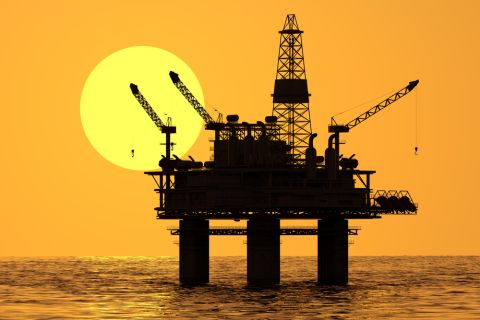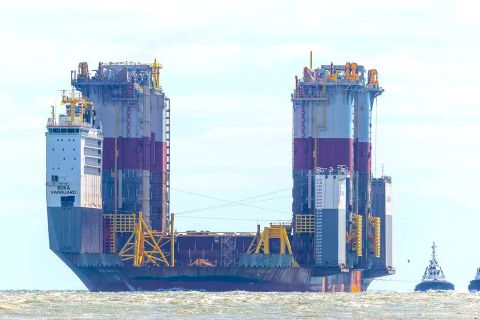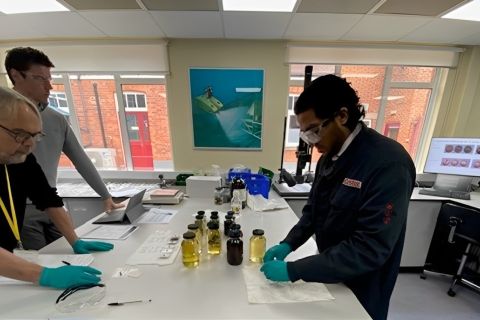Controlled-source electromagnetics (CSEM) has been an interesting technology to watch over the years. It has followed the same path as seismic only at a vastly increased pace. Sometimes that pace has raced ahead of the segment’s ability to keep up.
But CSEM seems to be coming into its own as it makes the transition from 2-D to 3-D and now into multiclient surveys. EMGS, for instance, has already had positive results from its 2008 Barents Sea survey, the first CSEM multiclient survey targeted at a lease sale. “We had a large measure of success considering the state of the technology,” said Carl Hutchins, president of EMGS’s multiclient group. “We made the transition from 2-D to 3-D, and we followed that in 2010 with advances in acquisition and processing for an even more robust product.”
Success in the Barents Sea had been elusive until recently. Most of the major discoveries prior to now were made in the 1980s. But Statoil and Total recently have announced significant discoveries in the Barents Sea over areas covered by EMGS’s 2008 survey, verifying the EM anomalies imaged in that survey. It followed with an additional survey in 2010.
“Judging from the EM results of our 2010 survey, it will be interesting to follow the wells that are scheduled to be drilled in 2012,” Hutchins said. “Oil companies are drilling a lot of wells next year over acreage plays covered by the two surveys.”
Brazil
The best was yet to come. In August EMGS was awarded a US $90 million contract by Petrobras to acquire a range of EM surveys in frontier and mature basins offshore Brazil. The BOA Galatea will acquire the year-long survey.
“Petrobras has been working with EM for a number of years and is probably one of the more experienced users of the technology,” Hutchins said. “They use both CSEM and magnetotellurics. They’ve had success matching CSEM data with well results and are very focused on making this a regular part of their exploration.”
Unlike EMGS’s last major contract, with Pemex, this contract will be a multiclient effort because EMGS will retain ownership of the data. “As are a lot of Petrobras contracts, including seismic contracts, this survey is designed over Petrobras acreage as well as some open acreage,” he said. “It’s designated as multiclient, which means we can sell the data [to other companies] in the future.”
While 3-D EM has multiple applications in exploration, the approach of using it in a frontier setting is rather new. “We think that the earlier in the exploration flow 3-D EM is used, the larger the dividends will be,” he said.
Additionally, the survey will give EMGS a much better understanding of the basins in Brazil and will give the company exposure to Petrobras partners, which will hopefully serve as a springboard for future multiclient projects in the area once lease sales resume, likely in 1H 2012.
What is in it for Petrobras? “Petrobras and its partners have a very aggressive exploration strategy for the next four to five years and a budget in excess of $200 billion,” Hutchins said. “They are very focused on the systematic development of all of their frontier areas for drilling now and also in the future. And CSEM, in conjunction with seismic and other methods, will help them tailor their drilling program to the most prospective plays.” He added that the geology in Brazil, other than the deepwater pre-salt areas, is quite conducive to CSEM technology.
Petrobras is one of many nationally focused oil companies that EMGS counts as clients; others include Statoil, Pemex, and Petronas. “We’re doing lot of work for these types of companies,” Hutchins said. “This gives us the opportunity to develop the technology in basins that are well-known to the local entities.”

Vertical resistivity data from EMGS’s multiclient 3-D EM survey is shown here with public domain 2-D seismic data, indicating resistivity in the area of the recent Skrugard discovery. (Image courtesy of EMGS)
The future looks bright
For the first time in the company’s history, EMGS has a comfortable backlog, which Hutchins said will work in the technology’s favor much as multiclient surveys helped advance seismic technology. Having large contiguous jobs advances development more quickly than doing smaller jobs separated by long distances.
“With the award of the Petrobras contract, our three vessels are booked into the foreseeable future,” he said, adding that this was part of the impetus to buy competitor OHM (see sidebar). This leaves EMGS as the primary player in the CSEM space.
“We don’t think we’ll be the only player in the market forever,” Hutchins said. “But in the near term it’s a healthy thing for the industry. It gives EMGS the financial stability to continue to advance the technology and expand the market, which is going to pay dividends for everyone.”
Recommended Reading
SLB OneSubsea JV to Kickstart North Sea Development
2024-05-07 - SLB OneSubsea, a joint venture including SLB and Subsea7, have been awarded a contract by OKEA that will develop the Bestla Project offshore Norway.
Chevron, Total’s Anchor Up and (Almost) Running
2024-05-07 - During the Offshore Technology Conference 2024, project managers for Chevron’s Anchor Deepwater Project discussed the progress the project has made on its journey to reach first oil by mid-2024.
Electric Hype vs. Hydraulic Reality: Advantages of Traditional Systems
2024-05-07 - Castrol's new fluid prevents gas hydrates in deepwater control systems.
EOG: Utica Oil Can ‘Compete with the Best Plays in America’
2024-05-06 - Oil per lateral foot in the Utica is as good as top Permian wells, EOG Resources told analysts May 3 as the company is taking the play to three-mile laterals and longer.
E&P Highlights: May 6, 2024
2024-05-06 - Here’s a roundup of the latest E&P headlines, including technology milestones and new contract awards.





